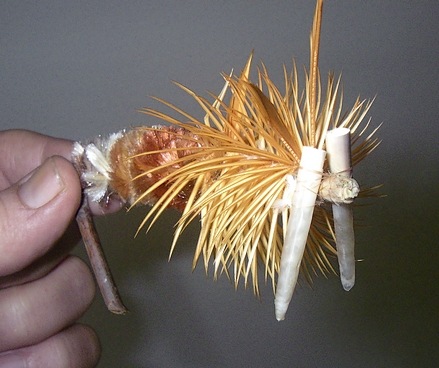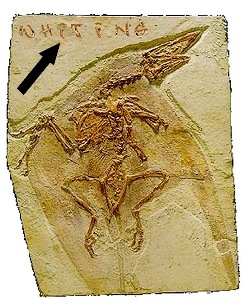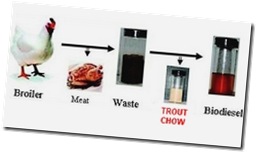It’s bad enough that we’re forced to endure the obligatory cavity search when boarding the plane – thereby removing all the explosives, brass knuckles, shanks, and belt fed weapons common to fishermen, but our arrival may soon be far worse.
 I stumbled across a New Zealand document outlining their strategy in combating the invasive threat – which includes foreign plants, insects and all the stuff we know about …
I stumbled across a New Zealand document outlining their strategy in combating the invasive threat – which includes foreign plants, insects and all the stuff we know about …
The volume of invasives carried unknowingly is enormous – but of particular interest is the items now being routinely confiscated from arriving tourists. Naturally there are the obvious targets like fruit and foodstuffs, but tents are in the high risk group and confiscated immediately.
Shoes have to be declared, and inspected – and may be cleaned on the premises by airport staff, or confiscated, some 80000 pairs were removed from passengers last year.
In 2006-2007, 116,700 seizures were made from 2% (103,000) of arriving air passengers and crew. Contaminated used equipment (e.g. footwear and tents) was the most commonly seized risk good (34%), followed by fruit fly host material (23%) and meat products (10%).
Pathogenic fungus spores, plant seeds, and all manner of biologics are found in debris trapped in the soles of standard footwear.
A study on footwear in Honolulu International Airport recovered 65 species of fungi from 17 shoes (Baker 1966). Pockets of clothing also have been shown to carry potential risk material including dried and fresh foliage, seeds and feathers (Chirnside et al. 2006). Used tents may not only harbour plant and animal debris but also live insects (Gadgil and Flint 1983).
Because tents are potentially going to be used in national parks or other indigenous forest areas, tents were categorised as ‘a major risk’, and carefully screened by
MAFBNZ border staff.
Researchers examined 157 pairs of soiled footwear carried in luggage and found that while the amount of soil and leaf litter adhering to the sole was relatively small, with a median
(range) weight of 1.0 g (0.01-55), this contamination supported a range of bacteria, fungi, seeds and nematodes (McNeill et al., unpublished data). Seeds were present on over 50% of footwear examined, and 73% of all seeds recovered were found to be viable. Nematodes, which are microscopic worms that include a large number of plant parasitic species, were present in 63% of the samples collected.
… and yes, anglers were caught transporting the nasty too.
… used fishing waders and socks have been implicated in the arrival of the invasive freshwater algae didymo (Didymosphenia geminate) from North America to New Zealand.
Assuming a goodly percentage of vacationers wore comfortable footwear due to the walking and gawking necessary to take in the sights, we can assume a significant percentage were rubber soled (soon to be banned on international flights) so we can expect to be replacing all those wading boots again …
Just kidding.
It neatly demonstrates how thin your margin for error is … and if you thought you wouldn’t have to quarantine your rubber soled wading boots, wouldn’t have to freeze them, or wouldn’t have to scrub them with disinfectants and dry them completely … you’re dead wrong.
… and while you’re at it dry those waders and socks too.
Didymo, New Zealand, Ministry of Agriculture and Forestry Biosecurity, nematodes, confiscation of tents, invasive species, anglers


 Fishermen have always put catching far above creature comforts as it makes the story twice worthy of the retelling.
Fishermen have always put catching far above creature comforts as it makes the story twice worthy of the retelling. Peering into scientific research is a mixed bag – every so often your knees come together involuntarily and you find yourself siding with PETA or their insect equivalent.
Peering into scientific research is a mixed bag – every so often your knees come together involuntarily and you find yourself siding with PETA or their insect equivalent.


 DNA testing proves the fur used was one of the many predatory cats that roamed the area, perhaps a lucky kill considering the flint spear points and unsophisticated hunting gear consistent with that era.
DNA testing proves the fur used was one of the many predatory cats that roamed the area, perhaps a lucky kill considering the flint spear points and unsophisticated hunting gear consistent with that era. Most of us anglers are oblivious to what goes on in all those streambed nooks and crannies. We’re content so long as it emerges at dusk and exists in enough numbers to keep fish fat and healthy.
Most of us anglers are oblivious to what goes on in all those streambed nooks and crannies. We’re content so long as it emerges at dusk and exists in enough numbers to keep fish fat and healthy. Those giddy days of Halloween television, Ma insisted you were too young to watch a pissed humanoid water breather slime its way through the streets preying on the unwary, dragging screaming female teens into the cold bosom of a nearby bay …
Those giddy days of Halloween television, Ma insisted you were too young to watch a pissed humanoid water breather slime its way through the streets preying on the unwary, dragging screaming female teens into the cold bosom of a nearby bay … There are thousands of highly trained scientists examining the diet and feeding habits of both salmon and trout. The Bad News is they’re doing so to determine whether they can be raised on Plutonium pellets, concrete, animal waste, or anything else we don’t want…
There are thousands of highly trained scientists examining the diet and feeding habits of both salmon and trout. The Bad News is they’re doing so to determine whether they can be raised on Plutonium pellets, concrete, animal waste, or anything else we don’t want…